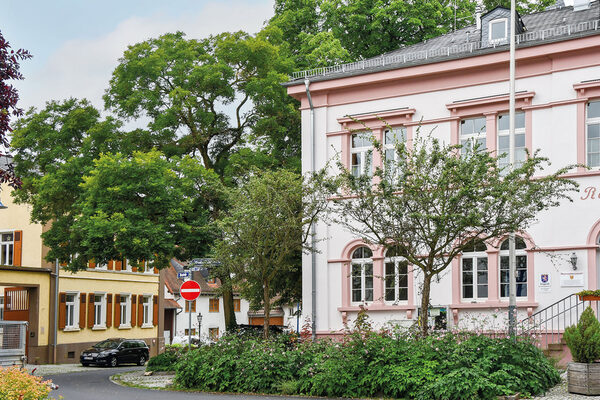Ersinesheim am Wäschbach
Erbenheim looks back on a long history: archaeological excavations prove that the Wäschbach was inhabited as early as 5,000 years before Christ.
Roman estates and Frankish settlement
The Romans settled here from the second to fourth century AD, as evidenced by numerous Roman manor houses along the Wäschbach. From the 6th to 11th century AD, the area was inhabited by a large Franconian tribe, as evidenced by the "Heydenkapelle" chapel discovered in 1971. Erbenheim was first mentioned in a document from the St. Ursula Abbey in Cologne in 927.
The place name Erbenheim appears in the 10th century as "Ersinesheim". It indicates a settlement in the early Franconian period, which is also confirmed by archaeological finds.
Middle Ages and early modern times
In the Middle Ages, Erbenheim belonged to the Königssondergau and probably came under the rule of the Counts of Nassau. In 1423, Emperor Sigismund granted the village town privileges. This enabled the inhabitants to protect themselves with ramparts and hold a weekly market. The 14th century also brought wars and destruction. In 1461, the town was burned down by Mainz. Erbenheim also suffered heavy losses during the Thirty Years' War (1618 to 1648). Nevertheless, the village remained of great importance, above all due to St. Paul's Church, whose tower still stands today.
Growth and industrialization
From the 19th century onwards, Erbenheim experienced a phase of growth and modernization. Serfdom was abolished in 1808 and the population increased. The first school building was built in 1834, which was converted into the town hall in 1926. From 1876, Erbenheim was connected to the rail network with the construction of the Ludwigsbahn. The region continued to develop in the following years: Erbenheim received electricity and water in 1906, a racecourse was opened in 1907 and converted into a civil airport in 1910.
Restaurants and horse racing
The large Erbenheim inns were a popular meeting place not only for the people of Wiesbaden, but also for people from the region. Especially after the famous Erbenheim horse races between 1907 and 1929, many people liked to stop off for a pint in the numerous inns.
Erbenheim in the 20th century
The years following the First World War brought great losses: 95 Erbenheim residents fell victim to the fighting and the community was considerably destroyed. In 1928, the community was incorporated into the city of Wiesbaden. During the National Socialist era, 37 Jewish families lived in Erbenheim. Many of them were murdered in extermination camps. The Second World War brought further destruction with 25 air raids and artillery bombardments that claimed 77 lives.
Post-war period and growth
After the Second World War, Erbenheim experienced a renewed upswing, boosted by the influx of refugees from the former eastern territories of Germany. In 1950, the town had 3,967 inhabitants, 681 of whom were displaced persons. Progressive urbanization led to the founding of new settlements such as Hochfeld (1960) and the Erbenheim-Nord district (1975). In the following decades, numerous schools, community centers and residential buildings were built.
Historical highlight
In 1968, Alfred Hitchcock filmed scenes for the spy thriller Topas at the Erbenheim airfield.
